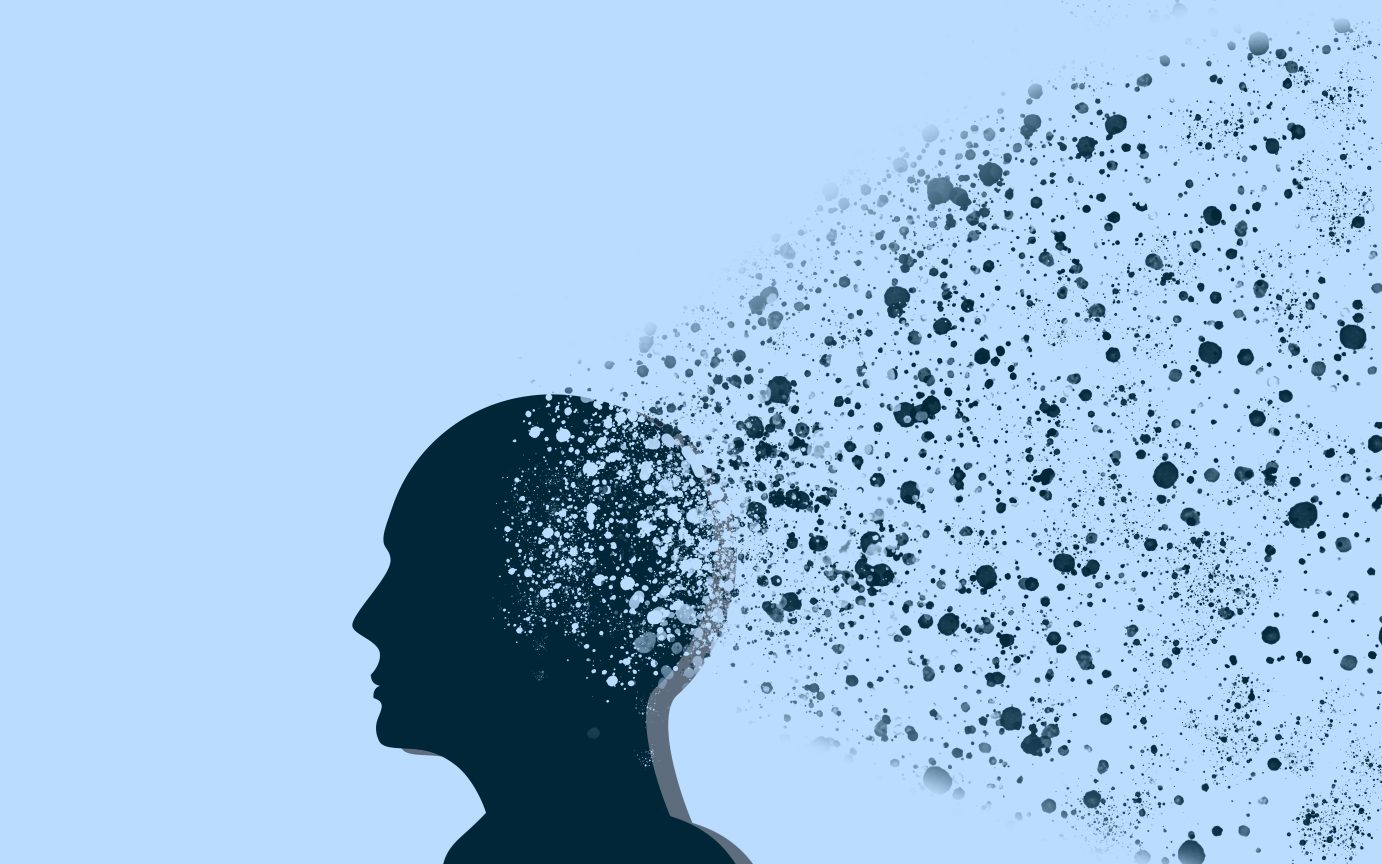7 new things we’ve learned about the brain

- In 1848, Phineaus Gage kicked off our modern neuroscience after blasting a tamping iron through his skull.
- We explore 7 things scientists have since learned about this important, complex organ.
- Many mysteries remain such as where consciousness originates and how we evolved such a multipurpose mind.
In 1848, Phineas Gage was laying railroad tracks in Cavendish, Vermont. As he was packing the powder, the charge detonated prematurely, launching the tamping iron — a three-and-a-half foot long, one-inch thick, and 13-and-a-half-pound spear of pure metal — through his head. It entered through his left check, passed behind his eye, and launched out the top of his head to land 30 yards away.
Gage miraculously survived, though he was obviously not unfazed. Normally a thorough man, Gage could no longer follow-up with plans. His friends complained that he was no longer himself. While he recovered enough to live a normal life, even moving to Chile to become a carriage driver, the traumatic injury had changed him.
Gage’s story has been retold in countless psychology textbooks — and exaggerated through countless retellings. He is patient zero for personality change from brain injury and an important milestone in our understanding of the human brain. His exhumed skull holds a place of honor at the Warren Anatomical Museum at Harvard, and neuroscientists continue to study it to this day.
Since then, we’ve learned much about how the brain works and its role in making us who we are. Here are seven things scientists have discovered about this incredible organ.

London cab drivers alter their brains when developing mental maps of the city. (Photo: Yiannis Chatzitheodorou/Flickr)
Cabbies, a lobectomy, and neuroplasticity
Neuroplasticity comes in two varieties: structural plasticity and functional plasticity. Structural plasticity occurs when the brain alters its physical structure through learning and interaction with the environment, functional plasticity when the brain moves functions from a damaged area to an undamaged one. We’ve known about neuroplasticity for a long time, but researchers are only beginning to uncover its potential.
“[Plasticity] is actually very powerful,” neuroscientist Michael Merzenich said during his TED talk. “This lifelong capacity for plasticity, for brain change, is powerfully expressed. It is the basis of our real differentiation, one individual from another. You can look down in the brain of an animal that’s engaged in a specific skill, and you can witness or document this change on a variety of levels.”
Even seemingly mundane tasks can have powerful effects on our brains. In one example of neuroplasticity, neuroscientists compared the brain scans of London bus and taxi drivers. They discovered that cabbies sport a measurably larger hippocampus – a key area of the brain involved in spatial memory. That’s because cabbies develop intricate mental maps of London to navigate to their fares’ destinations. Bus drivers, who drive the same route ad nauseam, do not.
Functional plasticity, on the other hand, provides some extreme examples. Gage provided neuroscience its premier case study, but there have been many more since.
One followed a seven-year-old boy known simply as U.D. When U.D. was 4, he began suffering debilitating seizures. When medications didn’t alleviate them, doctors performed a lobectomy and removed a full third of his right hemisphere, including the right occipital lobe. U.D.’s brain compensated for the trauma and began shifting visual tasks to his left hemisphere, including the ability to recognize faces, a task typically performed by the right occipital lobe.
What’s old is still new
U.D.’s astounding recovery was likely aided by his youthful brain, and it is true that neuroplasticity declines with age. But a growing body of evidence suggests we’ve been underestimating elderly gray matter.
In a study published last year in Cell Stem Cell, researchers autopsied the hippocampi of 28 people, ages 14 to 79. They found the hippocampi of older subjects still maintained thousands of immature neurons and intermediate neural progenitors. Unlike rodents and primates, humans appear to generate new brain cells well into our twilight years.
“We found that older people have similar ability to make thousands of hippocampal new neurons from progenitor cells as younger people do,” lead author Maura Boldrini said in a release. “We also found equivalent volumes of the hippocampus (a brain structure used for emotion and cognition) across ages.”
What causes reduced neuroplasticity in the elderly then? Boldrini postulates it may come from a smaller pool of neuron connections and the formation of fewer new blood vessels.
That may not always be the case, though. Neuroscientists at Tufts University School of Medicine discovered a molecular mechanism that directly enforced plasticity in mice brains. By targeting that mechanism, they were able to reestablish plasticity originally thought lost to old age.

Mouse spinal cord neurons. (Photo: NICHD/Flickr)
New brain cells
Scientists aren’t just unearthing the ways the brain works; they’re finding all new features. In a study published last year in Nature Neuroscience, researchers detailed their discovery of a hitherto unknown brain cell.
Called the rosehip neuron, this cell sports compact dendrites with many branching points and makes up about 10 percent of the neocortex. Its exact function is unclear, but the researchers speculate it could be an inhibitory neuron, meaning it lessens activity in that region of the brain.
It also remains unclear whether the rosehip neuron is unique to humans, though it has never been seen in mice or other laboratory animals. If it is unique to people, the rosehip neuron and other potentially secretive cells could explain why treatments that work in mice don’t translate to people.
“We really don’t understand what makes the human brain special. Studying the differences at the level of cells and circuits is a good place to start, and now we have new tools to do just that,” Ed Lein, study co-led and an investigator at the Allen Institute for Brain Science, said in a release.

A Pikachu parade in Yokohama, Japan. (Photo: Yoshikazu Takada/Flickr)
Gotta remember them all, Pokemon
As we age, last week can become a hazy blur, while experiences from third grade remain vivid and alive. If you’re a child of the ’90s, that means Pokémon.
Researchers at Sandford University placed adult test subjects in a functional MRI and showed them images of random Pokémon characters. The brains of adults who played Pokémon as children lit up the MRI more than the control group who did not. Pokémon players’ brains all activated the same site, the occipitotemporal sulcus, a brain fold behind our ears that responds to images of animals.
“What was unique about Pokémon is that there are hundreds of characters, and you have to know everything about them in order to play the game successfully. The game rewards you for individuating hundreds of these little, similar-looking characters,” study first author Jesse Gomez said in a release. “I figured, ‘If you don’t get a region for that, then it’s never going to happen.”’
It’s not just colorful pocket monsters that leave an indelible impression on our brains. A study published in the Journal of Prevention of Alzheimer’s Disease found that music from our youth activates a phenomenon called autonomous sensory meridian response (ASMR). For people afflicted with Alzheimer’s, such music can bring them out of their mental haze.
Mindfulness unlocks mental superpowers
Like so many religious experiences, meditation has come under the scientific lens and been found to have powerful effects on our brains.
Neuroscientist Richard Davidson scanned the minds of prominent meditators (i.e., people who had meditated up to 62,000 hours in their lifetime). He found that meditation altered their brains’ ability to produce gamma waves – quickly oscillating waves associated with attention and memory – significantly more than the average person.
When super meditators were asked to focus on compassion, for example, their gamma levels jumped 700-800 percent. These effects weren’t limited to when they meditated, either. Their gamma brainwaves were always heightened.
Daniel Goleman, who coauthored Altered Traits with Davidson, told Big Think: “We have to assume that the special state of consciousness that you see in the highest-level meditators is a lot like something described in the classical meditation literatures centuries ago, which is that there is a state of being which is not like our ordinary state.”
Laughter is the best medicine (for brain surgery)
The average four-year-old laughs 300 times a day, while the average adult laughs 17 times. Chances are this bit of pop knowledge is exaggerated, but it points to an important truth. The happier, healthier times in our lives are filled with laughter.
Laughter triggers the limbic system at the center of our brains, an area that influences emotions, memories, and stimulation. This mental surge is not only emotionally uplifting; it also has physically salubrious results. It reduces pain, boosts heart rate, produces certain antibodies, and improves the function of blood vessels.
Neuroscientists at Emory University School of Medicine have even hacked this physiological response to make awake brain surgery safer. By stimulating the cingulum bundle, a collection of white matter fibers that allow for communication between limbic system components, they caused immediate laughter in their patients, followed by a sense of calm and happiness. This helped prevent patients of awake brain surgery from panicking, making for a safer operation.
If laughter can uplift someone with a doctor literally poking around in their head, imagine what it can do for the rest of us.
Memory is a disease
Well, it may have originated with a virus at any rate. An international team of researchers recently reassessed Arc, a protein essential to memory formation. When researchers looked at how the protein assembles itself, they found that it has properties akin to a virus infecting its host.
“We went into this line of research knowing that Arc was special in many ways, but when we discovered that Arc was able to mediate cell-to-cell transport of RNA, we were floored,” postdoctoral fellow Elissa Pastuzyn, the study’s lead author, said in a release. “No other non-viral protein that we know of acts in this way.”
Specifically, it looks a lot like how the HIV retrovirus operates. The researchers hypothesize that 350-400 million years ago, an ancestor to retroviruses, dubbed retrotransposons, inserted genetic material into animals’ DNA. This led to the development of Arc in mammalian brains today, including humans. Without Arc, long-term memories cannot be solidified, so in a way memories infect our brains.
The human brain 101
Learning about the brain is a challenge. Neuroscientists are trying to measure the operations of a complex tool using the very tool they are trying to measure. It’s no easy task, yet in the last half century, they have accumulated a vast amount of knowledge about the human brain.
Yet many mysteries remain. We don’t know what consciousness is, where it comes from, or how it evolved. We don’t understand how the human brain can outcompete so many others in the animal kingdom. And although we’ve thought long and hard about it, we still don’t know what thought really is.
Despite these seven incredible facts, we’re only at the introductory course of our understanding. We still have much to learn about the human brain.





